Over the past few years I’ve become very invested in my strength training. I’ve learned a lot about why it’s important for runners to strength train and how to combine running and strength training workouts. Sometimes I think that when it comes to strength training we overcomplicate things. While it’s important to keep things interesting, I also think that it’s helpful to understand the basic movements we should be doing, focus on proper form, and then progress from there. So today I am going to talk about the 6 movement patterns every runner should be doing as a part of their strength training program.
Please note, I am not a personal trainer or strength coach. This is information I have learned from working with a strength coach and from my own research.
In this post I am focusing “movement patterns” and then giving examples of exercises that can be done for each. When you look at a specific movement pattern there are many exercises that fall into each category. The basic movement patterns that I am going to be talking about are squat, hinge, lunge, push, pull, and anti-rotation/anti-extension. So for example if you think about the squat movement pattern, there are multiple types of squats, from a body weight squat, to a goblet squat, or single leg squats, etc. I’ve read that there can be some slight variations on this list of movements, but these are the ones I am going to focus on in this post.
It’s important to master the basic movement patterns and progress slowly, and also to keep varying how you do your workouts rather than doing the same exact exercises month after month. Most strength programs will have you do the same set of exercises for about 4-6 weeks. Within that time you might increase your reps and/or weight. After those 4-6 weeks the exercises would change slightly, but you will still be following the same movement patterns.
Squat
Squats build strength in the quads and glutes, as well as the hamstrings and core. The targeted area can change slightly based on how you are squatting (i.e. legs spread wide or toes turned out). You want to make sure you are using proper form during a basic bodyweight squat before starting to add heavier weights. Once you are progressing you can hold a weight in front of you or place a bar on your back. Squats can really help runners to build leg strength that will power your running.
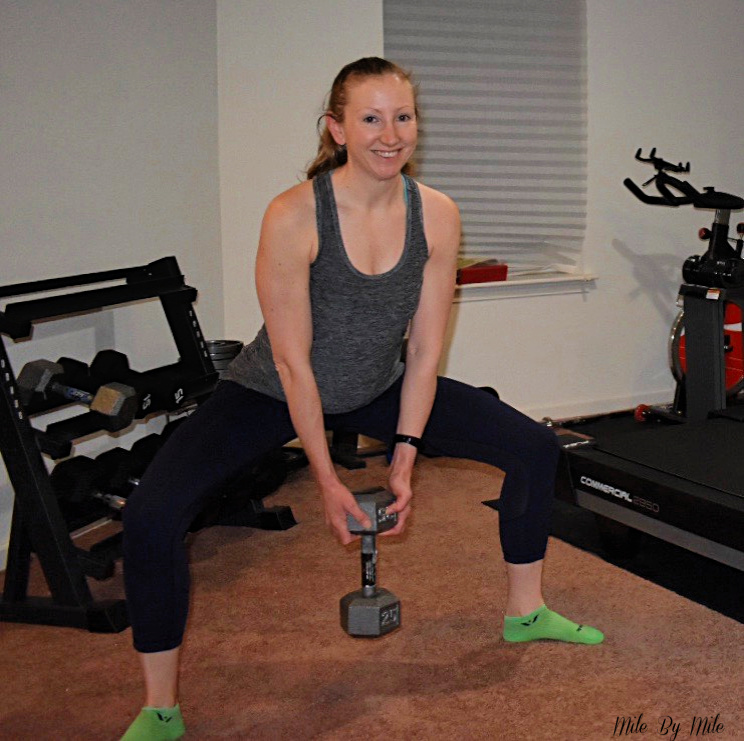
Hinge
The hinge movement pattern is mostly known for the deadlift exercise. This is an important exercise for runners because it really helps to strengthen the posterior chain. If you can’t do a deadlift with proper form, you could also do glute bridges or hamstring curls. In order to progress your deadlifts you can start by just using bodyweight, and from there add hand weights or kettlebells and then a barbell. Once you have the pattern down you could also incorporate kettlebell swings.
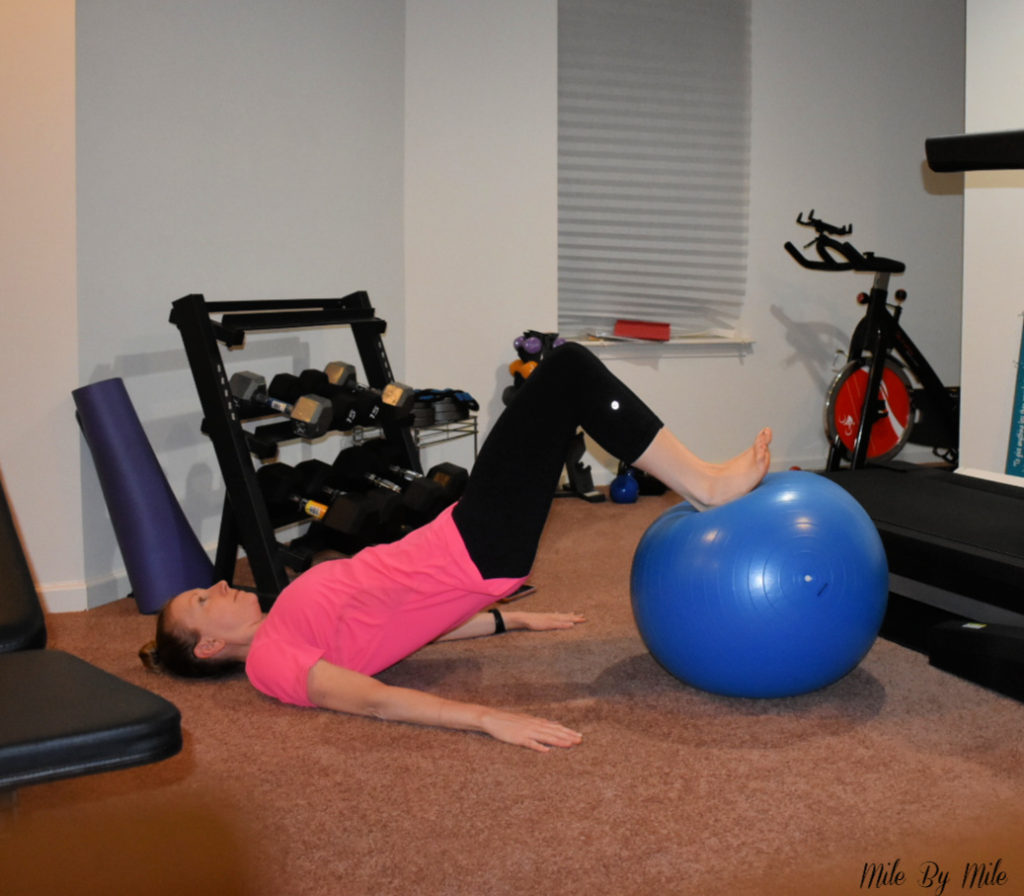

Lunge
Lunges are another movement pattern that works many of the large muscles in our legs as well as the core. In order to balance and move from this position we need to be able to stabilize from the hips. Again, there are many variations to the lunge. Other than the basic split squat, you can do forward and backward lunges, walking lunges, side lunges, and lunges with your front or back foot on a step. There are other variations like the curtsey lunge that will slightly change the area of the glute you are working. Of course you can also vary your weight or just use your body weight for these exercises.

Push
Many runners only focus on their lower body when strength training, but the upper body is important as well! It helps with posture, breathing, and more efficient running. Push exercises are exactly how they sound- they involve pushing. This can be push-ups, bench presses, shoulder presses, or a variety of exercises using a TRX or cables. Push-ups are a great push exercise because they work so many muscles at once, including your core, and you don’t need any equipment! If you are working on improving your push-ups you can record yourself doing them so you can make sure you are using proper form.
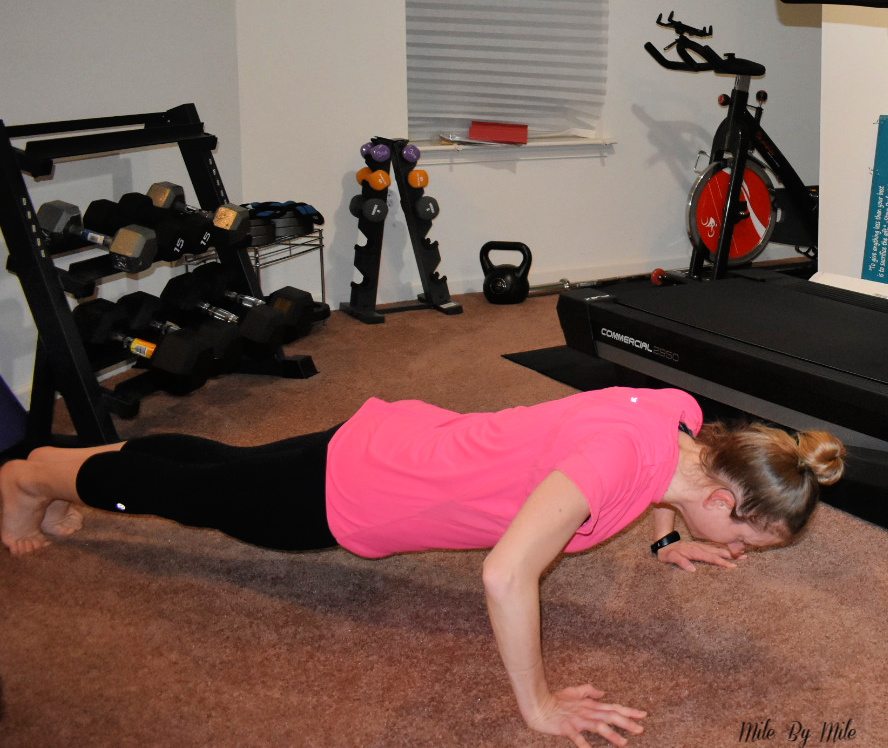
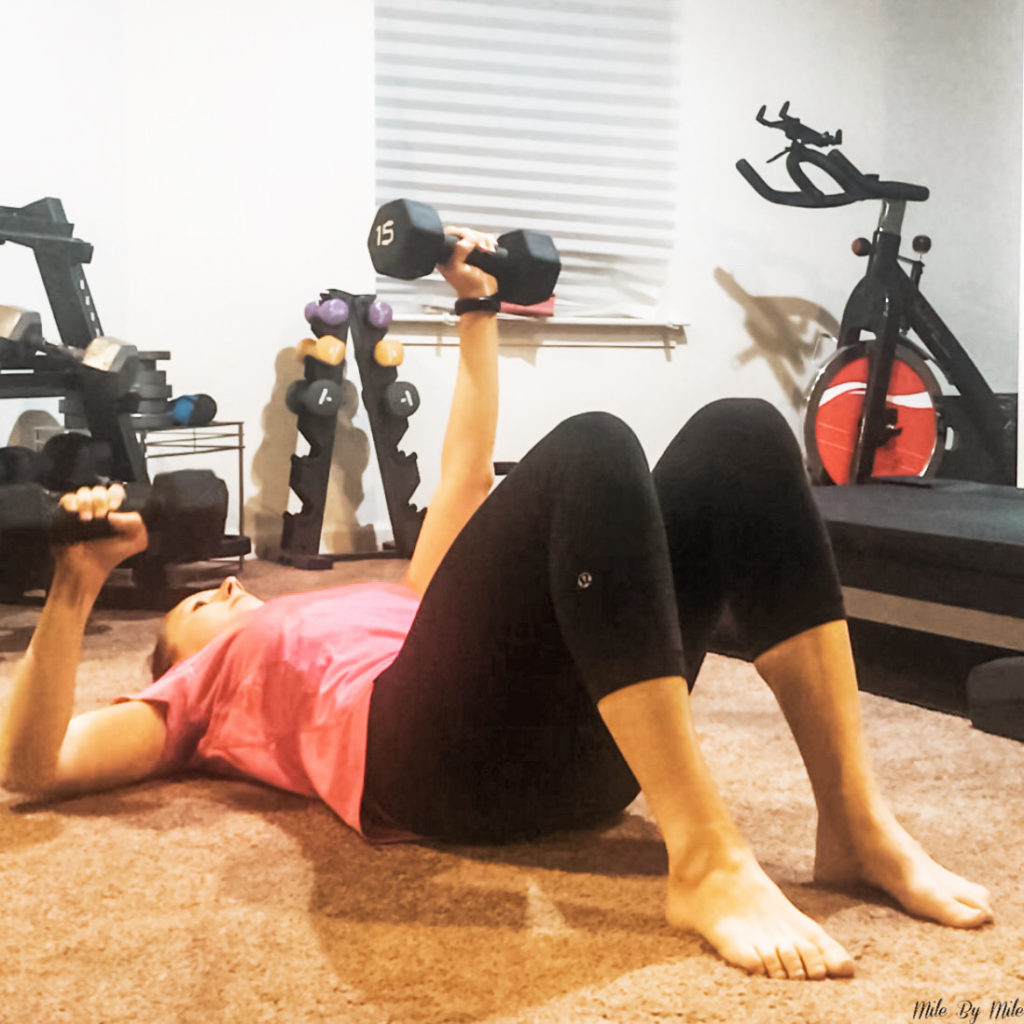
Pull
The pulling movement pattern works opposing muscles to the pushing movement. It’s important to do both of these movements to prevent imbalances. I find that exercises like rows are great for runners because they really help with posture muscles that are often overlooked in training. You can do dumbbell rows, incline rows with a TRX, or cable pulls. If you are able to work on pull-ups that is a great exercise as well.


Other important movements
The strength training program that I have followed for several years now had the above movement patterns as well as a few others that are focused on the core/stability/anti-rotation. I am putting them all in one category but I don’t want to call this “core” because that’s not a movement. Instead you can think of it as movements that encourage you to stabilize through the core. For example, if you do a plank and you lift your arm, you are forcing your core to stabilize to keep your body from moving too much (anti-extension).
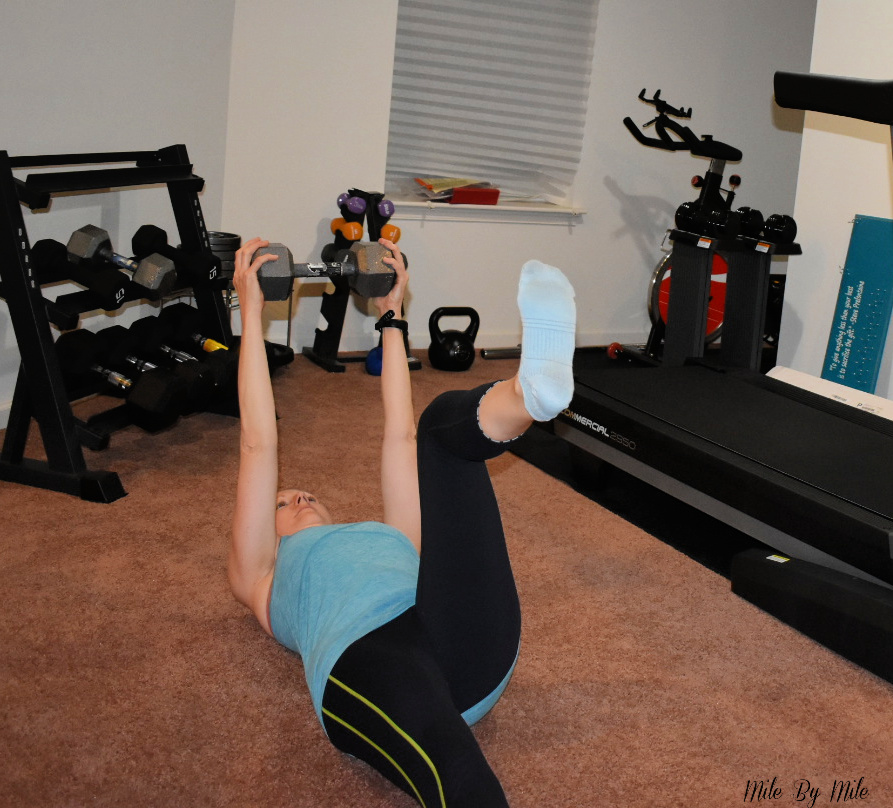
Anti-rotational movements are also really important. These help us from rotating too much when we run which can use alot of energy or lead to back injuries. (Also, having enough mobility in the hips helps to prevent the low back from moving too much to compensate). One of my favorite exercises is the pallof press. There are many variation of this exercise but the main idea is that you are pushing a band and not allowing your body to turn or rotate as you move your arms.
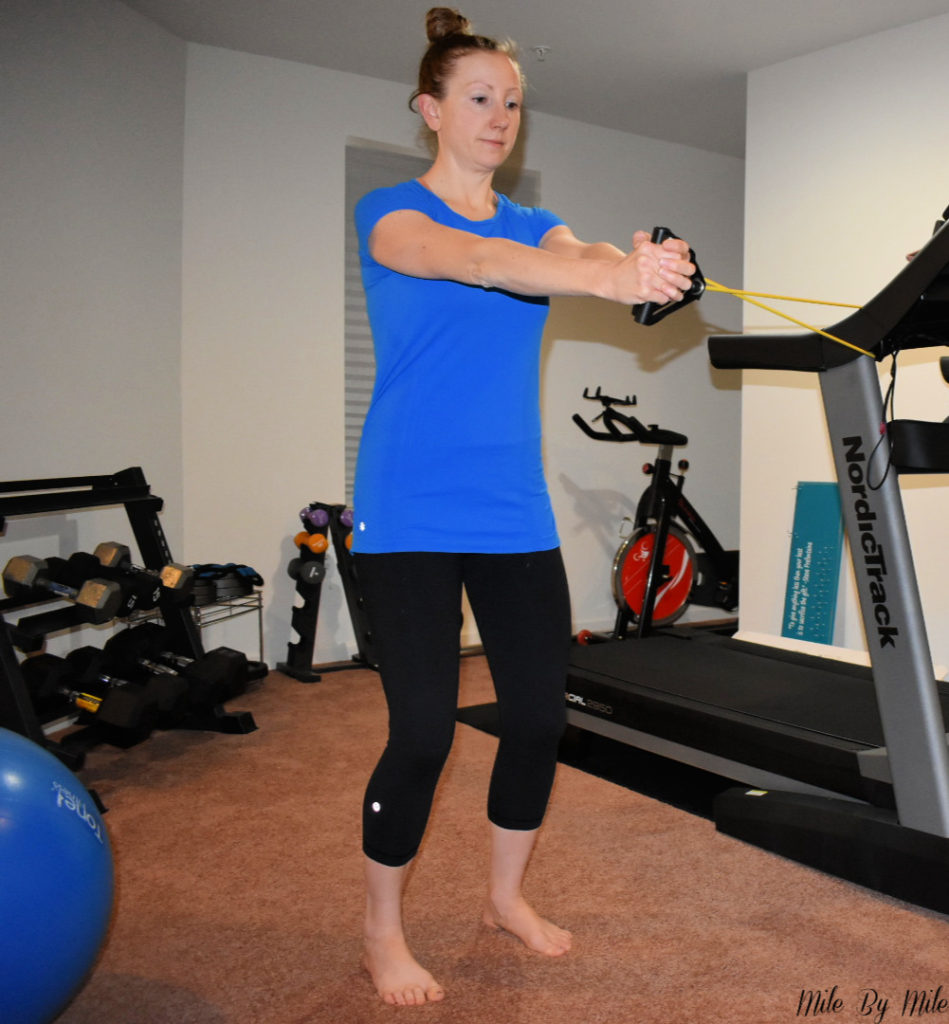
Finally, there are carries/locomotion exercises. This is where you walk while holding a weight in various positions. A farmer carry is when you carry weights in each hand by your side. You can also do the farmer carry just with weight in one hand. From there you can progress to holding the weight above your head, by your chest, or mixed (one up in the air, one down by your side). Again, focus on getting the basic exercise down with good form first. Once you have good form in place you can really use some heavy weights with these. They are great for encouraging good movement patterns and strengthening the postural muscles.

Final thoughts on Movement Patterns for Runners
One thing I want to suggest, especially if this seems overwhelming/confusing to you, is to consider working with a strength coach. It doesn’t even need to be long term. There are coaches available who can watch your movement patterns and then make recommendations for where you should begin with strength training. Once they get you started and you know you are doing the right exercises and using proper form, you can either continue working with a coach or move on to doing your own training.
Around 2016-2019 I worked with Drew for almost 3 years. When I got started I recorded myself doing a set of exercises and then he created 6 week workout plans for me. I also worked with Mary of Lift Run Perform in 2020-2021. For the last year or so I’ve been back to creating my own programs again, but I am sure I will turn back to the professionals at some point again.
The bottom line is: runners need to strength train! Find what works for you, keep it simple and stay consistent.
What kind of strength training do you do?
Do you focus on movement patterns or specific exercises?
Ever work with a strength coach?



Solid workout suggestions for runners, Lisa!
My “coach” was my physiotherapist after my injury last year. Many of the strength routines he gave me were like the ones you talk about above.
One additional one that I found useful were 3x 1-minute “banded skater walks”, like walking squats with a band around your knees. They are similar to the squats you suggest.
Oh yes those are great! I love doing exercises with bands, especially as a pre-run warm up.
Love doing strength work and coaching folks. It is so important for us to do these as we age we can stay strong. Great work!
Yes, the strength training is really important for everyone!
I definitely agree that working the upper body is ignored by many runners!
The anti rotational stuff, though — thanks! I know that I rotate my upper body a LOT when I run. And I never knew there were things you could do to try to counter act that!
Pretty interesting, right? I know its something I need to work on because I’ve had some low back issues. I’m pretty sure it’s all related to core stability.
Great overview. The anti-rotational moves are so challenging, but I definitely feel the results!
Yes! I only started doing them a few years ago and now they are a part of my regular routine.
Great overview! I typically use these movement patterns when prescribing strength to my athletes (and writing for myself), although I need to remember to add more carries!
The carries were definitely new to me when I started working with Drew. They make me feel strong!
You nailed when you said we need to work on our glutes. I’ve also seen runners talk about struggling with lunges–which means they need to strengthen their hips. I’ve learned a ton from my coaches. I doubt I’d still be running well if it weren’t for my strength work!
I am having KB envy over here–the heaviest KB I have is 12 lbs, lol!
I think with the glutes alot of people do things like clamshells and bridges, which are great for activation and injury recovery, but we also need to lift heavy! It took me a long time to get brave enough to start lifting heavier weights.
I need some heavier KBs! I was actually looking for some on Amazon last week but they were all too expensive right now.
I continue to work with my strength coach and she builds on all these patterns, keeping it interesting! My focus now is to build strength for the hills on my trail runs. We don’t have a lot of hills here so I need to mimic those movements. It’s been really effective (and hard!).
yea yes! Great over view. I focus on incorporating all of these types of moves into my strength training and I know I am stronger for it. It’s so important as we age.
Definitely! I think many of us have learned (often the hard way) how important strength training is for runners!
Great workout tips, Lisa. When I went to the orthopedist for an injured hamstring/piriformis, I asked him if I should be doing squats and lunges with weights. He told me absolutely “Yes!” for the same reasons you discuss. I have been slacking since I can’t go to the gym anymore but I could use my hubby’s weights. Thanks for the good reminder!
I’ve had so many issues with my piriformis over the years! It still gives me trouble now and then but the strength training has helped alot. In fact when it acts up its usually because Ive slacked on strength. I hope you can figure out a way to strength train at home!
Thanks for all the info! I appreciate your explaining all six movement patterns & showing examples. My big into to strength training came via P90X, over 10 years ago. That program worked perfect for me & fit my lifestyle well. I’ve since done my own thing, but have incorporated many of those exercises into my own workouts.
It’s all about finding what works for you! I think its great when people start out by following a program or working with a coach and then learn enough that they can do their own thing if they want.
I do nothing. I do appreciate your tips. Someday, I may get a trainer, join a gym and do something. Right now, I just run. 🙁
It’s great that you found what works for you! Honestly if I could get away with only running, I probably would. But I’ve learned the hard way too many times that I need to strength train or I end up injured.
I love this post! YEs to all of these movement patterns! My personal trainer and I were working on so many exercises using these movements before the lockdown. I’ve gotta restart doing some work on these at home!
I hope you can figure out a way to do your workouts at home!
I mentally understand the benefits of strength training and every time I start a program, I see results and enjoy them. I’m currently running a lot stronger since beginning strength training in February. Usually my problem is I get bored with it too quickly. I’m loving the Peloton workouts though so hopefully I can continue with those and OrangeTheory when it opens back up!
I hope you can stick with it! It really is beneficial, and there are so many different options that hopefully you can avoid getting bored!
Interesting. I never really thought about the pull. I will have to be more mindful of those when I’m working on my arms. Great tips, as usual!
I’ve always done some sort of rows but more recently I learned why they are so important. When I started doing them with heavier weights I started to notice that my running form was better.
Great suggestions and explanations! Runners need all of these to improve their running, reduce injury, and strengthen/balance their non-running muscles.
Definitely! There are so many benefits to effectively strength training.
What a great post! I love how you organized everything, and it gives great direction, especially for those who don’t know where to start. I need to up my strength-training game. Honestly, I’ve gotten lazy about it but we have tons of equipment at home and there’s no reason not to use it. Now with the stay-at-home mandates, I sure have the time!
Glad you enjoyed the info! It can be tough to get on board with the strength training but now I love it. I especially like being able to do it at home and not have to deal with going to a gym!
This is great advice. Runners absolutely need to incorporate strength into their routine. I’m a fan of pushups, squats, dips and seated calf raises.
Those are all great exercises!
These are all great exercises, Lisa! I now go to Crossfit and I really like the heavy lifting.
At home, I do additional “booty training” and calf strengthening exercises for my Achilles.
Right now I am crosstraining more than actual running!
As you know I’m not big of ST. I won’t argue that it’s not important.
But now I do go the gym 3x a week and use the machines. I mostly focus on the arm ones.
Such great information. I love how you’ve made all of these movements so easy to understand. Yes, they are important for runners but everyone can create a program based on these movements and patterns. They are important for life!
Hingeing is my favorite of these! I always forget about the pull as well. These are all fantastic and so useful and beneficial.